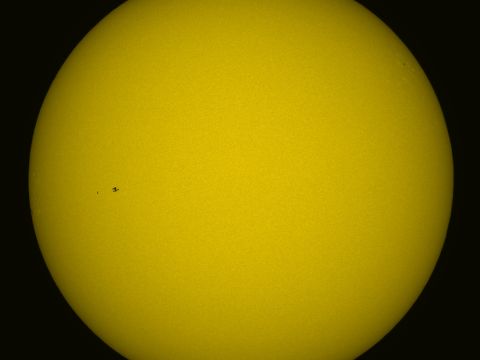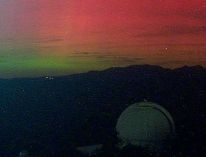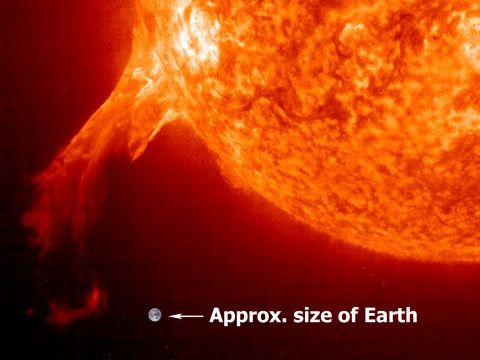Slowly, this amazing instrument is becoming out-of-date, and things seem to be wearing out on it. Yet, because of backup systems, on-site repairs and remote engineering excellence, it keeps on ticking. Hopefully, it will remain functional until the James Webb Space Telescope becomes operational.
From NASA:
Hubble’s Advanced Camera for Surveys Resumes Exploring the Universe
After a brief hiatus, the Advanced Camera for Surveys aboard NASA’s Hubble Space Telescope is back in business, probing the far reaches of space in a quest to understand the true nature of the universe’s most dominant constituent: dark energy.
This is one of the first images of the universe taken after the ACS camera resumed science operation on July 4. The camera was offline for nearly two weeks as NASA engineers switched to a backup power supply after the camera’s primary power supply failed.
Image above: A cluster of galaxies with recent supernova. Image Credit: NASA.



 Though it’s 93 million miles away, the Sun still hurts your eyes when you look at it. But bright sunlight (along with accurate planning and proper equipment!) resulted in this sharp silhouette of spaceship and space station. The amazing telescopic view, recorded on September 17, captures shuttle orbiter Atlantis and the International Space Station in orbit over planet Earth. At a range of 550 kilometers from the observing site near Mamers, Normandy, France, Atlantis (left) has just undocked and moved about 200 meters away from the space station.
Though it’s 93 million miles away, the Sun still hurts your eyes when you look at it. But bright sunlight (along with accurate planning and proper equipment!) resulted in this sharp silhouette of spaceship and space station. The amazing telescopic view, recorded on September 17, captures shuttle orbiter Atlantis and the International Space Station in orbit over planet Earth. At a range of 550 kilometers from the observing site near Mamers, Normandy, France, Atlantis (left) has just undocked and moved about 200 meters away from the space station. 
 Lately, I’ve been studying solar phenomena because I think the topic is so critical to understanding the natural processes that affect global weather and climate. An interesting segué from the weather aspect, however, is into the subject of auroras – Aurora Borealis in the North and Aurora Australis in the South. What causes them?
Lately, I’ve been studying solar phenomena because I think the topic is so critical to understanding the natural processes that affect global weather and climate. An interesting segué from the weather aspect, however, is into the subject of auroras – Aurora Borealis in the North and Aurora Australis in the South. What causes them?  Leading astronomers declared Thursday that Pluto is no longer a planet under historic new guidelines that downsize the solar system from nine planets to eight.
Leading astronomers declared Thursday that Pluto is no longer a planet under historic new guidelines that downsize the solar system from nine planets to eight.